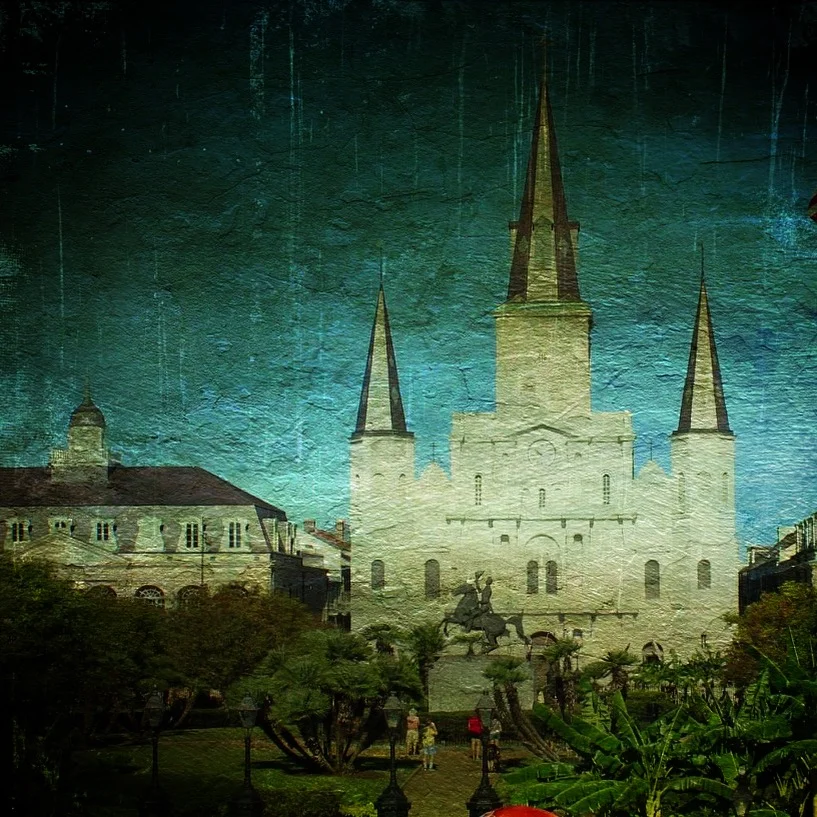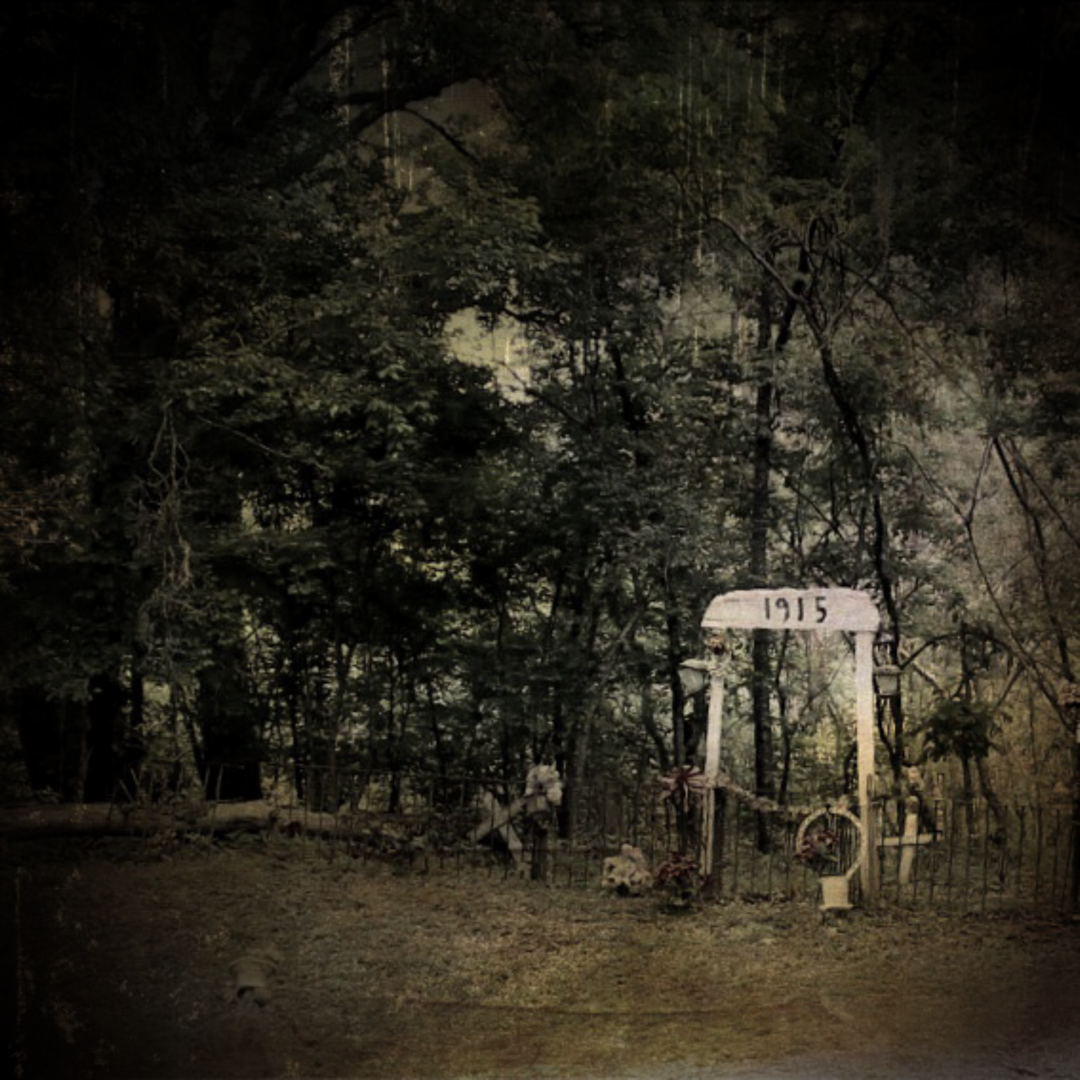In the city of Cleveland,Tennessee is a legendary mausoleum haunted by the spirit of young girl killed in a tragic accident at a railroad crossing. Legend says if you circle the tomb seven times and then approach it's entrance, the metal door will swing open and invite you in. Yet this legend isn’t what made the ornate marble mausoleum the basis of one of the most infamous ghost stories in East Tennessee— it’s that the marble tomb seems to bleed.
The Waverly Hills Sanatorium

MOST HAUNTED PLACE ON EARTH
On July 26, 1910 the Waverly Hills Sanatorium opened outside Louisville, Kentucky; the hospital on the hill was dedicated solely to the treatment of those infected with the highly contagious and often fatal disease, tuberculosis. During its forty years in operation, thousands would pass through the hospital doors, though most would survive, hundreds would not. Although modern medicine has largely made tuberculosis an illness of the past, the stigma of it lingered.
In the decades since the sanatorium closed and the site deteriorated, it gained a new reputation, as one of the most haunted buildings on Earth.
The Mischievous Feu Follet

Cajun folklore claims that in the swamps and bayous of Louisiana are supernatural entities that appear to travelers in the form of glowing balls. Much like the well known will-o'-the-wisp, those unlucky enough to be lured into the trap of these fiery spirits are often doomed to an early death. They are known simply as le Feu follet.
The Kennesaw House

The Kennesaw House of Marietta, Georgia was built beside the Western & Atlantic Railroad line in the 1840's; but over the course of this beautiful brick building's long life, it has seen numerous tragedies that has left many to believe that the building is haunted by spirits from the past.
The Burning of Atlanta

The city of Atlanta, Georgia was a strategic stronghold for the Confederacy during the Civil War, serving as an integral railroad hub supplying the South with men, munitions and supplies. But by the spring of 1864, as President Abraham Lincoln became desperate for a military victory, the city would become the direct target of the infamously aggressive Union General William T. Sherman and his philosophy of '“total war.”
Legend of the Bell Witch

The Red River runs for over a hundred miles through South-central Kentucky and Middle Tennessee. A tributary to the Cumberland river, it’s named after the river’s unique watercolor, caused by clay and silt deposits containing iron oxides. In 1778, Thomas Kilgore built a fort on the banks of the Red River near present day Cross Plains, but native hostility was so great he abandoned it in less than a year, a scenario that played out over and over for the next decade till unfair treaties and American coercion pressed the Native tribes west.
But it’s also during this era, in the early nineteenth century, that one of the most well documented hauntings in American History occurred, right here in Robertson County on the Red River.
A legend so infamous, it purportedly caught the attention of a future President; gripping a small Tennessee community for years, and terrorizing a family for generations.
A legend known as the Bell Witch.
Blackbeard's Demise

Off the coast of North Carolina is one of America’s most breathtaking roadways, a 138-mile National Scenic Byway that connects a vast stretch of beautiful and historic barrier islands known as the Outer Banks.
Archaeologists believe these small islands, separating the mainland from the Atlantic Ocean, were inhabited for more than a thousand years prior to the arrival of European explorers; most likely by small branches of Native tribes like the Algonquins, Chowanog, and Poteskeet. These were some of the tribes who initially welcomed the European explorers of the early 16th century, but their hospitality would inevitably cost them their communities, as settler migration and European-borne disease brought a sharp decline to their population.
The Outer Banks, now a major tourist destination known for its beautiful wide open beaches, also has the distinction of being home to the first European colony of North America-- the infamous Roanoke settlement, established in 1584; as well as the world famous town of Kitty Hawk where the Wright Brothers made their first successful flights in 1903.
But it’s on Ocracoke Island, one of the Outer Banks’ southernmost spits of land, accessible only by ferry, where the last stand of one of the world’s most notorious pirates occured. A man feared by many, who terrorized ships on the high seas with his grim persona and massive displays of force.
A pirate known as Blackbeard.
A man that some claim still walks amongst the living three centuries later, forever searching Ocracoke Island for either revenge, or his head.
St. Alban's Sanatorium

On January 15, 1916 Dr. John C. King opened the St. Alban’s Sanatorium in Radford, Virginia; converting a former school into a modern mental health facility that he had hoped to transform by focusing on the moral management and care of those admitted. Unfortunately, his goal of assisting his patients fell short, leaving many to live lives of torment within the walls of his sanatorium.
A sanatorium built on land that had been the sight of numerous tragedies for centuries. Tragedies that pitted natives against colonists, and northerners against southerners.
Birth of a City: New Orleans, Part III
This episode of Southern Gothic is the third in the three-part series "Birth of a City: New Orleans," a story that chronicles the inception of a great American city and the legends that evolved with it.

Part III: The Infamous Madame Delphine LaLaurie
On April 10, 1863 a fire broke out in the home of Creole socialite Madam Delphine LaLaurie; but as men rushed to save the lavish French Quarter mansion, they had no idea of the horrors they would uncover inside. Madame LaLaurie and her husband had been brutally and inhumanely torturing their slaves.
A massive public uproar erupted and news of the vicious crimes of this Creole Queen spread across America rapidly; yet some scholars believe there may be more to this story than has been told in the portrayal of this historical figure, and it might even be possible that the infamous socialite may have survived without punishment for her crimes, making her one of the most infamous figures of New Orleans’s vast underbelly of legends and lore.
Theme music for "Birth of a City: New Orleans" was written and performed by Grammy nominated singer-songwriter Adam Wright.
Additional narration by Justin Drown of Obscura: A True Crime Podcast.
In the city of Cleveland,Tennessee is a legendary mausoleum haunted by the spirit of young girl killed in a tragic accident at a railroad crossing. Legend says if you circle the tomb seven times and then approach it's entrance, the metal door will swing open and invite you in. Yet this legend isn’t what made the ornate marble mausoleum the basis of one of the most infamous ghost stories in East Tennessee— it’s that the marble tomb seems to bleed.
Birth of a City: New Orleans, Part II
Birth of a City: New Orleans, Part I
Fort Jefferson's Most Infamous

Construction of Fort Jefferson began in the early 19th century to address the growing need for America to protect its shores. The resulting massive coastal fortress is the largest masonry structure on American soil; however, its history as a defensive outpost is far overshadowed by its time spent as a prison, housing Union Army deserters and none other than the very men convicted for successfully conspiring to assassinate President Abraham Lincoln.
The Abandoned Amusement Park of Lake Shawnee

In 1926 Conley Snidow opened the Lake Shawnee Amusement Park in West Virginia, on land that many believe was once sacred to the indigenous tribes of the region. Land that these Native men even once attempted to protect through a bloody massacre of a family of settlers. Unfortunately Snidow’s amusement park would continue the location’s connection to tragedy, causing Snidow to abandon this once great amusement park for the prospering coal miners of West Virginia.
Today, almost half a century since it closed the gates, the Lake Shawnee Amusement park still sits abandoned, and exposed to the elements as what some claim is a playground for the spirits of the past.
The Lost City of Frenier
In 1915 a vicious hurricane cut through Southeastern Louisiana causing massive destruction in its ravenous wake. The storm surge topped 12 feet and the hurricane’s devastating winds swept through at 145 mph, leaving almost 300 dead. Yet nowhere was the storm’s wrath more apparent than the small settlement of Frenier.
Ghosts of the Myrtles Plantation
Legend says General David Bradford had a price put on his head by President George Washington for his role in the Whiskey Rebellion, that’s why he fled down south and built a plantation for himself in the Spanish part of Louisiana. Bradford went on to live out his days as a wealthy planter, but the legacy of the home he built has evolved into what is today known as the Myrtles Plantation — America’s most haunted home.














































